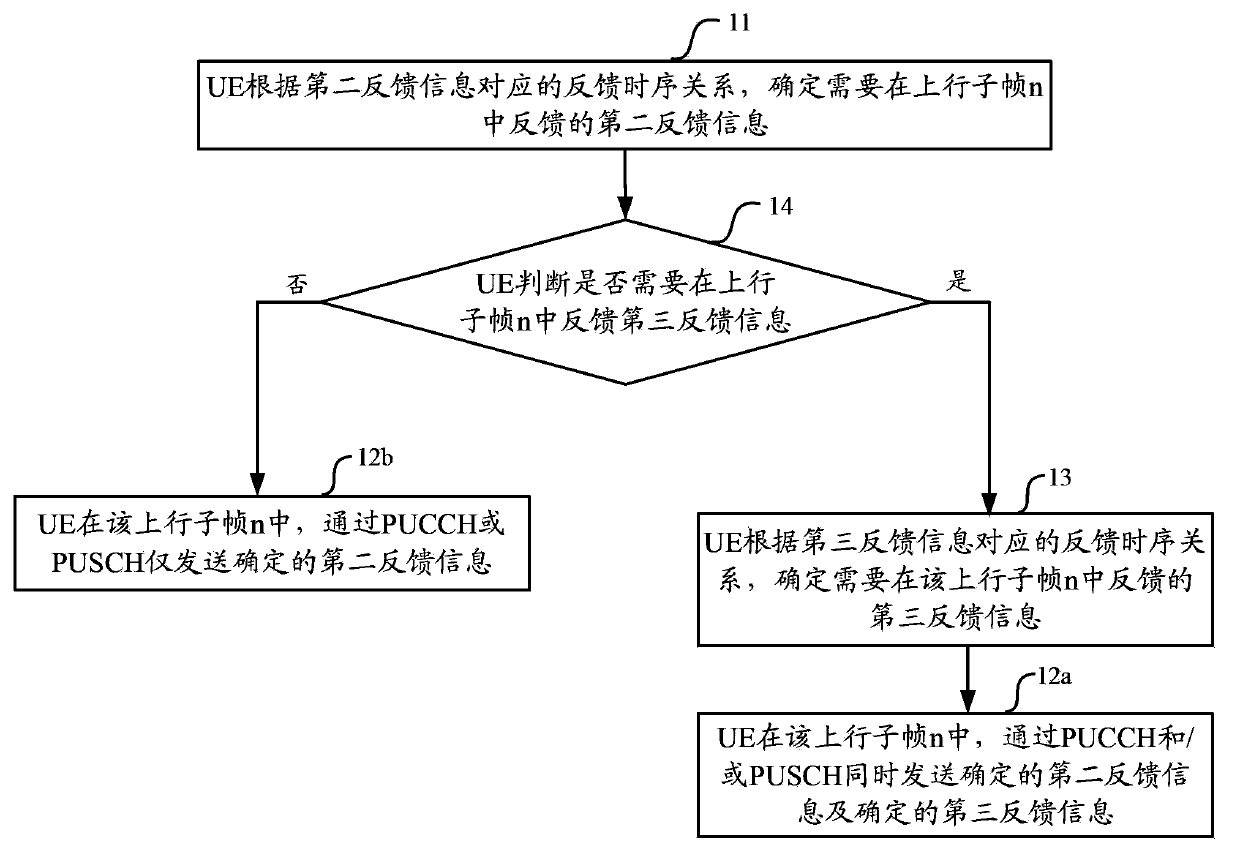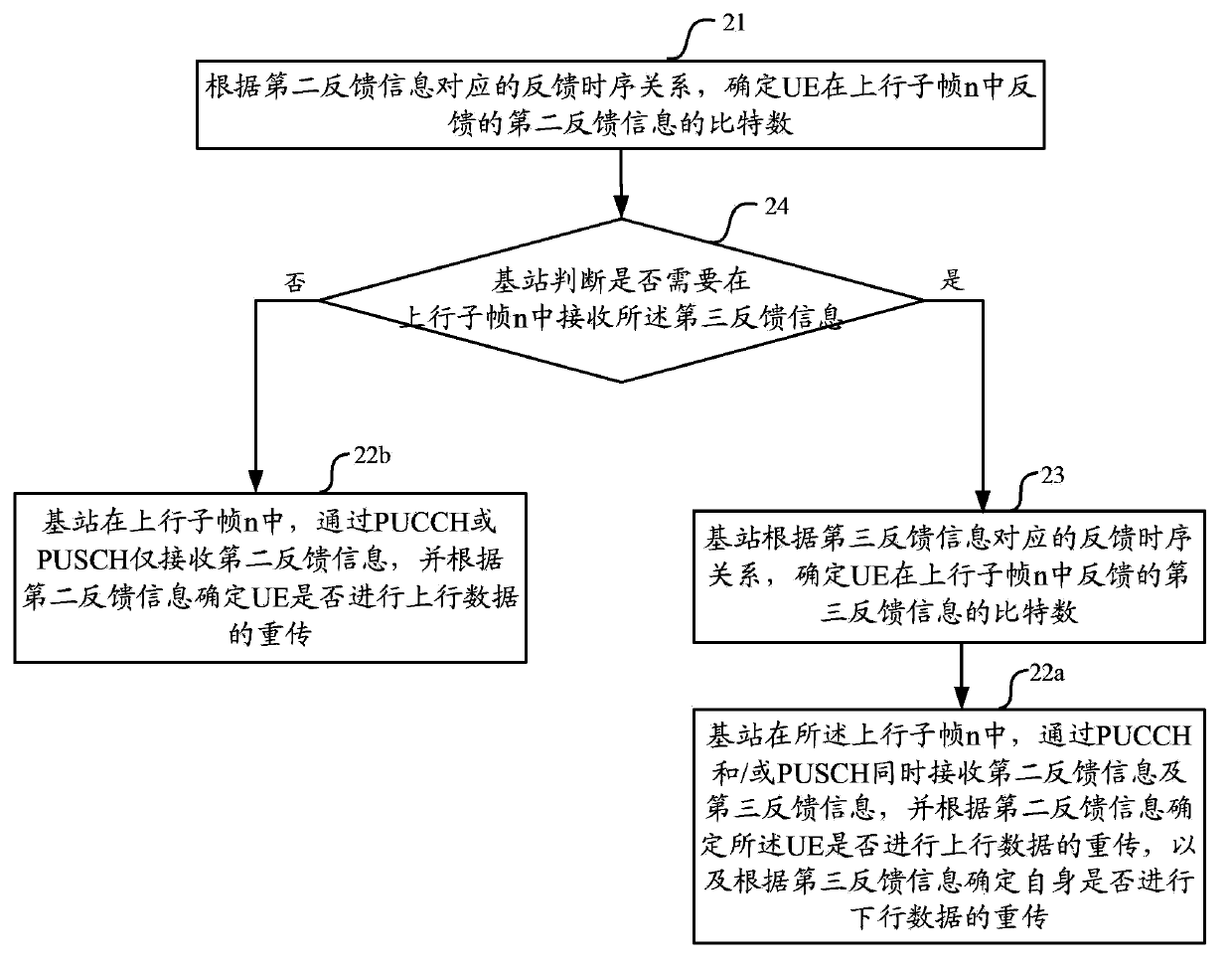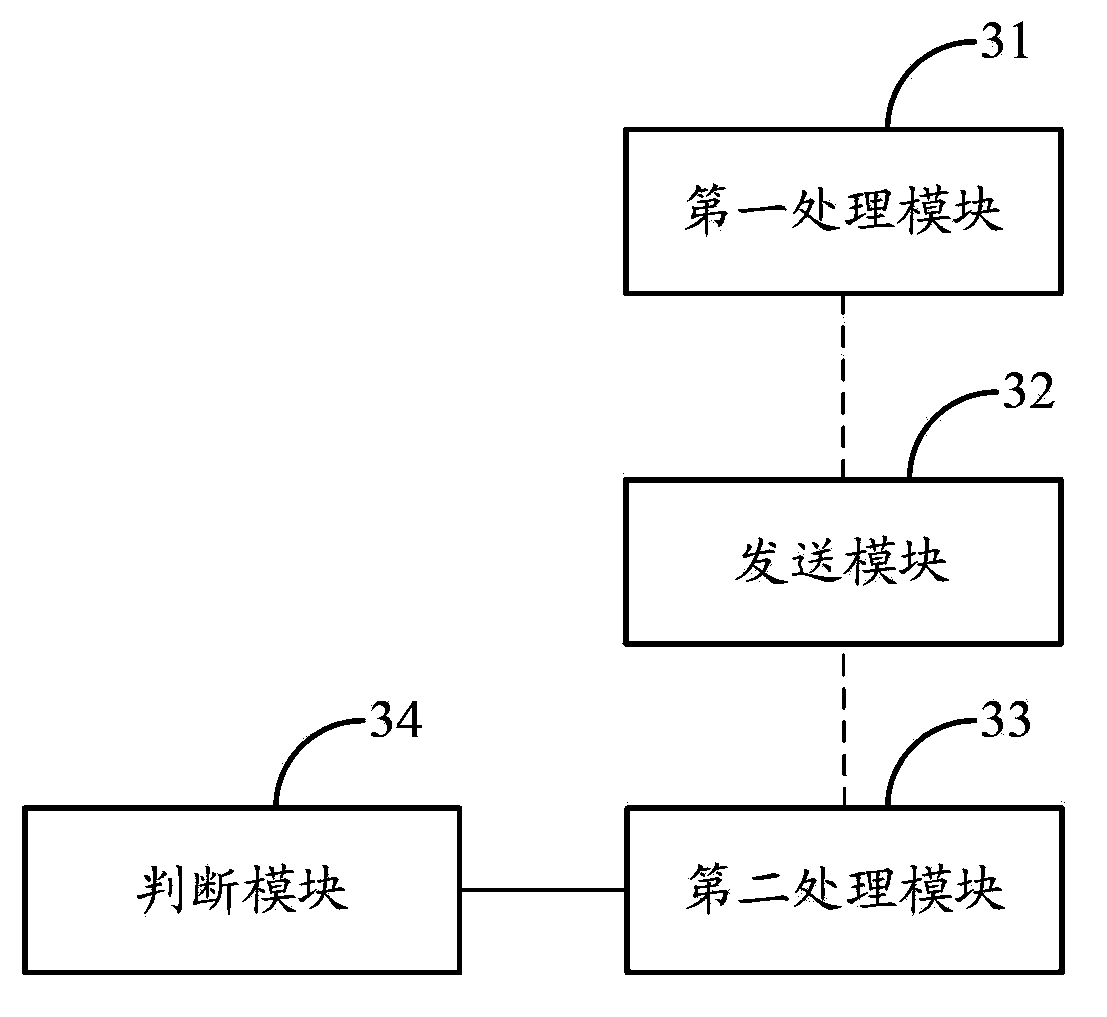Transmission information feedback method, equipment and system
A technology of feedback information and feedback timing, which is applied in the field of transmission feedback information, and can solve the problem of no implementation scheme for transmitting uplink ACK/NACK information
- Summary
- Abstract
- Description
- Claims
- Application Information
AI Technical Summary
Problems solved by technology
Method used
Image
Examples
Embodiment Construction
[0034] Embodiments of the present invention provide a method, device, and system for transmitting feedback information, which are used to solve the problem of UEs using CoMP for uplink transmission. How to feed back the second feedback information to the base station when the first feedback information is obtained and the second feedback information for indicating to the base station whether the same uplink data needs to be retransmitted is obtained based on the first feedback information. The embodiment of the present invention includes two cases, one is to transmit the second feedback information alone, and the other is to transmit the second feedback information and the ACK / NACK feedback information of the downlink data simultaneously.
[0035] The embodiments of the present invention will be further described in detail below in conjunction with the accompanying drawings.
[0036] see figure 1 As shown, a method for sending feedback information provided by an embodiment of...
PUM
 Login to View More
Login to View More Abstract
Description
Claims
Application Information
 Login to View More
Login to View More - R&D
- Intellectual Property
- Life Sciences
- Materials
- Tech Scout
- Unparalleled Data Quality
- Higher Quality Content
- 60% Fewer Hallucinations
Browse by: Latest US Patents, China's latest patents, Technical Efficacy Thesaurus, Application Domain, Technology Topic, Popular Technical Reports.
© 2025 PatSnap. All rights reserved.Legal|Privacy policy|Modern Slavery Act Transparency Statement|Sitemap|About US| Contact US: help@patsnap.com



